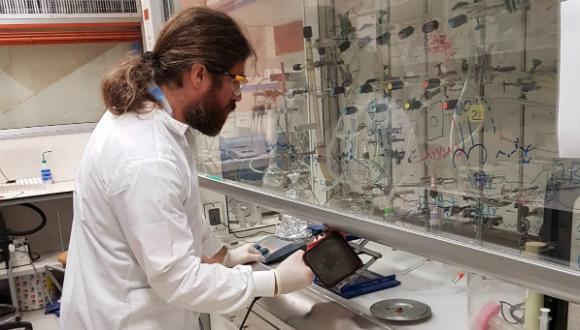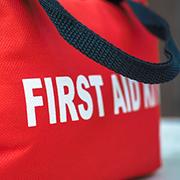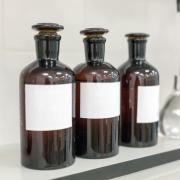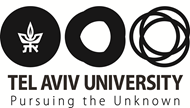Chemical Safety in Laboratories
General Safety Instructions for Work in the Laboratory
- It is required to wear protective goggles in the laboratory
You must wear protective goggles whenever you are in the laboratory. Do not use contact lenses in the laboratory; they are liable to cause injury if vapors of a foreign substance are trapped between the eye and the lens.
- It is required to wear a laboratory coat and closed shoes
You must wear a long-sleeved laboratory coat, long trousers and closed shoes in the laboratory (do not wear sandals or open shoes).
- It is strictly prohibited to eat, drink, chew gum or smoke in the laboratory.
The substances in the laboratory are poisonous, and are liable to come into contact with and permeate food that is exposed or stored in the laboratory.
- It is prohibited to taste chemicals
Consider all chemical substances to be poisonous.
- It is prohibited to heat a closed container
When a closed system is heated, pressure develops that can cause the container to explode.
- Controlled heating
Any heating of a system or container must be carried out in a controlled and careful manner. When heating a substance in a test tube make sure that the opening of the test tube is not directed towards you or another person.
- Toxic gases
Any experiment in which toxic or noxious gases are emitted is to be carried out in a fume hood. Remember: if the door of the fume hood is open, the effectiveness of the extraction of the gases is reduced.
- Be careful to avoid inhaling chemical substances
If you are required to smell chemical vapors above the opening of a laboratory container (a test tube or bottle), keep the container away from your nose and wave your hand over the opening so that the substance's vapors will reach your nose in a controlled manner.
- Do not pour water into an acid (or into a base)
When preparing diluted solutions of acids or bases, always pour the acid or the base into the water and not the other way around. Such an activity must be carried out inside a fume hood, slowly and while stirring. The reaction while stirring is exothermic (releases heat) and causes the system to heat. In the case of diluting sulfuric acid with water, the solution may boil. (If water is poured into the acid, the solution splashes, and this is very dangerous.)
- It is prohibited to put a pipette into your mouth
A pipette is used as an exact measuring tool for sampling volumes of liquids. It is prohibited to use your mouth to pump into a pipette. Use only a pumping aid such as a syringe, pipette bulb or water pump for this purpose. Using your mouth is a hazard that can cause a toxic substance to enter your mouth. Of course, do not put anything in your mouth in the laboratory! (Including fingers and writing implements.)
- Use of an electric hot plate
Many experiments are carried out at different temperatures. When heating flammable substances, it is preferable to use an electric hot plate rather than a gas burner. Make sure you heat toxic or corrosive substances in a fume hood. Keep materials or equipment that are not connected to the experiment away from the electric hot plate, and make sure that the electrical cable does not become heated and damaged. If you want to check whether the hot plate is heating, touch the heat source with the back of your fingers, not with your fingertips. Do not leave a liquid heating unsupervised. At the end of the experiment, disconnect the electrical switch. At the end of the work day, remove the plug from the wall socket.
- Use of a Bunsen gas burner
There are gas burners of different sizes and with flames of different strengths. (Flame temperature is 600–1000 degrees Celsius.) Immediately after lighting the flame, check whether there is a smell of gas, and if you notice a smell, close the flame and report immediately to the instructor or technician. (A substance with a strong smell is added to cooking gas to warn of leaks.) Make sure that the gas pipe is undamaged and in sound condition, and that it is not near to the heat source. Heating using a flame must be carried out slowly and carefully. Not every glass container can be heated over a flame. Containers in which heating is permitted are beakers, Erlenmeyer flasks, combustion crucibles. Do not heat measuring equipment such as measuring cups, measuring flasks or pipettes.
The heat sources may cause a fire. Keep any flammable substance away from them. Do not leave a heating system or a lit burner unsupervised! Do not heat a closed system.
At the end of work with a gas burner, turn off the fire according to the following order: close the burner tap and make sure the flame is extinguished. Close the table tap to which the rubber pipe is connected. At the end of a laboratory day, the main gas tap must be closed.
- Do not return chemicals to the container
If an unused chemical remains, do not return it to the container (bottle, box, jar) from which it was taken; returning materials to the container can cause contamination of the original container or in other cases an unwanted chemical reaction. After taking material, make sure that you immediately close well the container from which it was taken; in this way you will prevent contamination of the material, entrance or emission of water vapor into it, emission of volatile substances into the environment, and confusion between stoppers.
- Beware of broken glass
Glass is a hard, fragile and sometimes fatal material. When fitting a glass tube or thermometer to a rubber tube or stopper, use oily lubrication material, and protect your hands with a piece of cloth.
- Do not use a cracked or broken glass utensil
If you break a utensil or encounter a broken utensil, inform the technician and receive another one instead.
- Chemical waste
Any substance that remains after an experiment and is not needed is defined as chemical waste. At the end of every laboratory session or experiment, handle the chemical waste according to the instructions you receive. Remember: Do not pour different substances into the same container used to store chemical waste.
- Before performing an experiment, make sure you have read and understood the entire process.
You must understand the reactions that you are about to carry out, and find out if there are potential hazards. You must be aware of every risk of the substances you are going to work with.
Do not perform an experiment without receiving permission from the instructor. Never work in a laboratory without another person nearby.
For your convenience, in the next link you can download a printable booklet on the subject of chemical safety in the laboratory:
Explore
Quick Links
Safety websites in Israel
Safety websites worldwide
Full list of links
Safety videos





